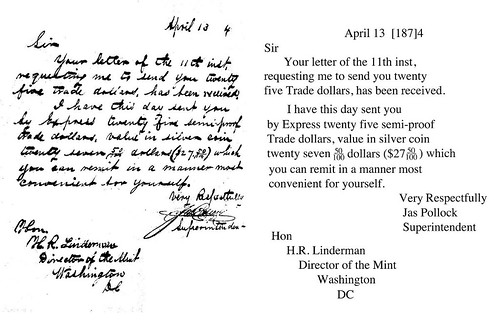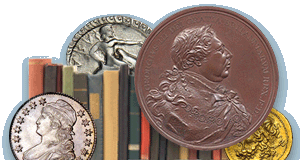
PREV ARTICLE
NEXT ARTICLE
FULL ISSUE
PREV FULL ISSUE
SEMI-PROOF: AN 1874 LETTER ON TRADE DOLLARS
Bob Julian writes: The attached letter will, I think, be found of general interest. The term “Semi-Proof” is new to me in the Mint records and perhaps means one of two scenarios. 1) Regular planchets struck with proof dies, or 2) Proof planchets struck with regular dies in a standard coining press. The second option is the more likely. It is also of interest to note that Pollock charged the director $1.10 for each Trade dollar.
Interesting. While I'm sure plenty have marketers have used the term "semi-proof" to spruce up the perceived value of a
piece they're selling, this is the first time I recall seeing the term used by the U.S. Mint. Is anyone familiar with this usage?
-Editor
Wayne Homren, Editor The Numismatic Bibliomania Society is a non-profit organization promoting numismatic literature. See our web site at coinbooks.org. To submit items for publication in The E-Sylum, write to the Editor at this address: whomren@gmail.com To subscribe go to: https://my.binhost.com/lists/listinfo/esylum All Rights Reserved. NBS Home Page Contact the NBS webmaster 
|